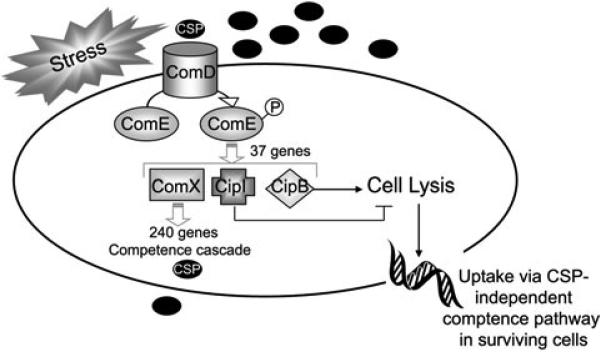Fig. 9.
Summary of data. The sensor histidine kinase ComD is activated either directly by stress or by an accumulation of the CSP pheromone and activates its cognate response regulator ComE by phosphorylation. Activated ComE then directly regulates the expression of 37 genes, including the alternate sigma factor ComX, the CipB bacteriocin and its immunity protein CipI. CipB causes cell lysis in a fraction of the population, which potentially contributes DNA for uptake and other secondary signals to trigger genetic competence in the surviving population. Expression of 240 genes, including the competence cascade and the CSP molecule itself, are directly controlled by ComX. Open grey arrows: direct genetic regulation. Solid black arrow: phenotype caused.

